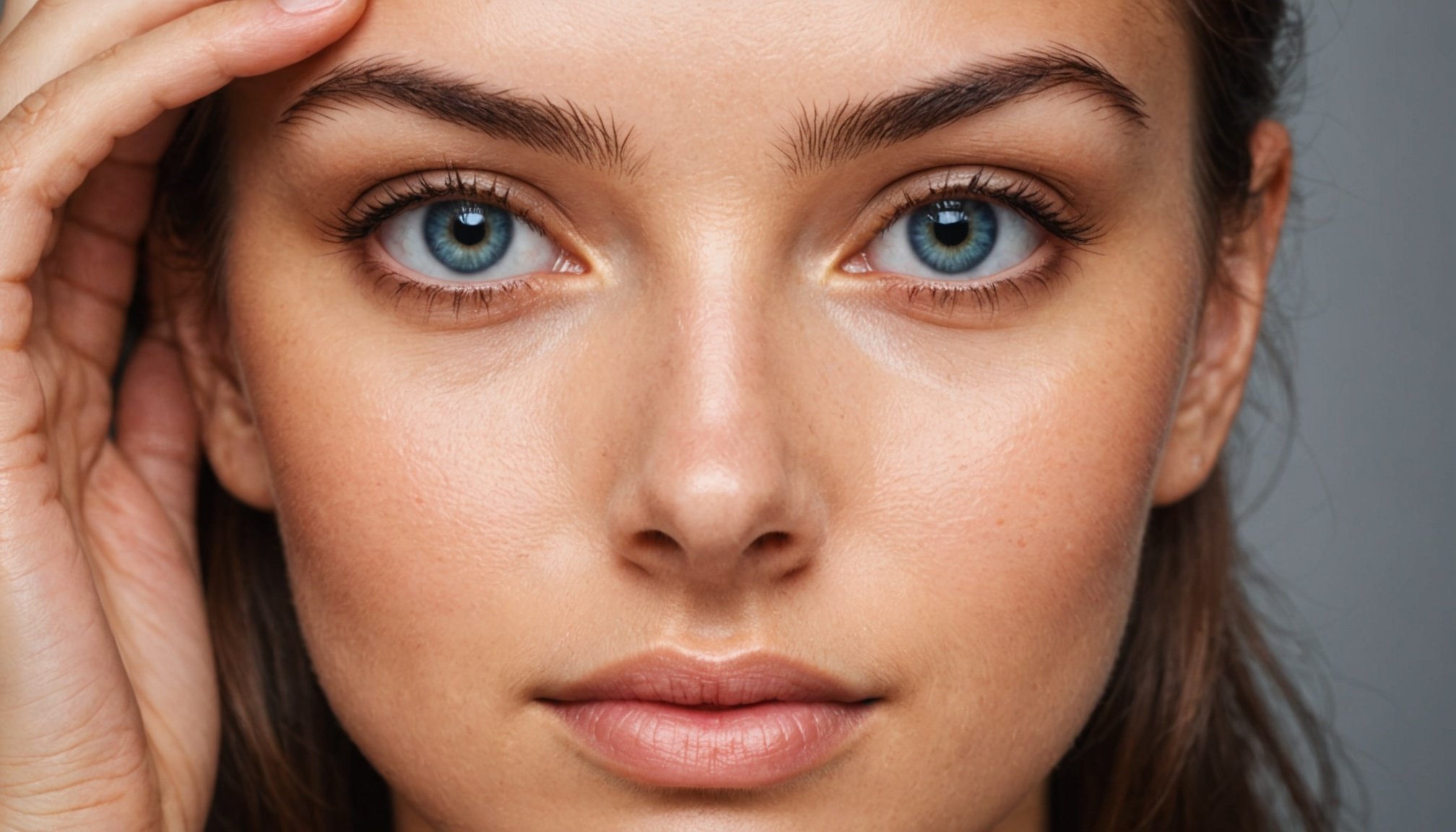Understanding Dark Under-Eye Circles
Dark circles are a common cosmetic concern often tied to various underlying causes. Many people find these darkened areas frustrating, yet understanding their origins can pave the way for effective skin care solutions.
Common Causes
A variety of factors contribute to the development of dark circles. One major cause is genetics; if your family members have them, you might too. Additionally, lifestyle choices like poor sleep, stress, and hydration levels play crucial roles. The lack of rest can lead to pale skin, making blood vessels more visible beneath the thin skin of the area.
Also to see : Top Non-Dairy Calcium Sources to Boost Bone Health for Menopausal Women
Impact of Lifestyle and Genetics
Lifestyle habits such as smoking and excessive alcohol consumption can exacerbate the problem by reducing skin’s elasticity and moisture. Genetics determine aspects like skin thickness and pigmentation around the eyes, influencing whether you’re predisposed to having dark circles.
Skin Anatomy Related to Under-Eye Area
The under-eye region is uniquely thin and delicate. As we age, skin loses collagen and elasticity, making blood vessels and the dark pigmentation more pronounced. Understanding skin anatomy helps in tailoring skin care routines that target these specific areas effectively.
Also to read : Top Exercises That Enhance Heart Health and Build Muscle Tone Together
Natural Ingredients for Brightening Dark Under-Eye Circles
Exploring natural remedies can offer gentle yet effective options for achieving brighter under-eye skin. Below we delve into some common household ingredients that might help.
Cucumber
Cucumber is well-known for its skin cooling and hydrating properties. When applied to the under-eye area, cucumber slices can effectively soothe and refresh the skin. Simply slice a cucumber and place the slices over closed eyes for about 10-15 minutes. Alternatively, cucumber juice can be applied using a cotton pad. Be sure to check for any skin irritation during initial application to ensure the best experience and outcome.
Tea Bags
Green tea and chamomile tea bags serve as potent anti-inflammatory agents for the skin. Rich in antioxidants, these teas can reduce puffiness and lighten the under-eye area. After brewing, cool the tea bags in the refrigerator before placing them over your eyes. Users often report increased effectiveness when incorporating this skincare method into their routine.
Aloe Vera
Aloe vera is valued for its skin revitalizing properties. To harness these benefits, you can prepare a DIY aloe vera gel by extracting the gel from a fresh leaf and applying it gently under the eyes. Benefits include hydration and a reduction in wrinkles, making aloe vera a sought-after staple in natural skin care.
Application Methods for Home Remedies
Incorporating a skincare routine with home remedies demands understanding the right application methods. Step-by-step guides often begin with preparation, where the choice of natural ingredients is crucial. For example, mixing honey and cinnamon can create a soothing face mask. This is followed by a consistent application tailored to individual needs.
Every skincare routine benefits from patience and consistency. Visible results might take time, but perseverance is key. Neglecting regularity can hinder the effectiveness of these home remedies.
To maximise the benefits of any home remedy, employing specialised application methods such as massage can be valuable. Here are some techniques:
- Circular Motion: Using gentle, circular motions can enhance blood flow and ensure even distribution of the remedy over the skin.
- Not only does this assist in absorption, but it also revitalises the skin.
- Tapping Technique: Lightly tapping areas like the under-eye can reduce puffiness.
Maintaining a regular skincare routine with home remedies is less about making swift changes and more about introducing thoughtful habits. Implementing these methods will promote healthier skin, albeit with time and commitment. This approach ensures that both immediate needs and long-term goals are met.
Potential Side Effects and Precautions
When using skincare products, understanding potential side effects and adopting necessary precautions is crucial. It’s common for natural ingredients to cause reactions, especially in those with skin sensitivity. These reactions might include redness, itching, or mild irritation. Although natural, ingredients like essential oils or plant extracts can still provoke adverse responses.
Patch testing is a vital step before full product application. It helps identify any allergic reactions or irritation risks associated with your skin sensitivity. To patch test, apply a small amount of the product on a discreet area of your skin, such as behind your ear or the inner elbow. Wait 24 hours to observe any reaction; this can minimize unwanted side effects.
If issues like persistent irritation or severe redness occur, consulting a dermatologist is recommended. Professionals can provide tailored advice and recommend alternatives suitable for sensitive skin. Plenty of products marketed as gentle can still be potent for some skin types. Hence, expert guidance ensures that your skincare routine is both effective and safe. This approach not only mitigates potential side effects but also secures healthy, glowing skin over time.
User Experiences and Testimonials
User testimonials regarding the effectiveness of different natural remedies provide insightful observations. Many users have shared their success stories, particularly emphasising remedies such as ginger or chamomile for soothing digestive issues. These testimonials often describe noticeable relief from symptoms within just days of consistent use, underscoring the effectiveness of natural alternatives.
One noteworthy account involved a user who struggled with migraines for years, finding significant improvement after incorporating lavender oil into their routine. They reported a substantial reduction in the frequency and intensity of their headaches, attributing their success to its calming properties.
Additionally, there is common feedback recognising the importance of personal variation. Remedies that yield excellent results for some might not work as effectively for others. This individual variance underscores the importance of trial and error in discovering what works best for each person.
Therefore, consider these user experiences and be open to exploring various options. The positive testimonials not only highlight the potential benefits but also encourage the continuous search for an approach tailored to individual needs. Acknowledging these experiences can guide informed decisions when opting for natural remedies.
Conclusion of Natural Remedies for Dark Under-Eye Circles
Exploring natural remedies for dark under-eye circles can be both rewarding and refreshing. It’s important to remember that addressing these issues holistically can lead to more sustainable results. By incorporating simple skincare routines, you can potentially achieve a more radiant glow.
You might find it helpful to integrate brightening solutions such as aloe vera or cucumber slices into your daily practice. These remedies are not only accessible but also gentle on the skin. They can soothe and hydrate the delicate under-eye area, contributing to a more even complexion.
To get the most out of your skincare regimen, consider adopting a comprehensive approach that includes a balanced diet and sufficient sleep. Access to a variety of natural remedies can empower you in maintaining healthier skin.
For those interested in diving deeper into this topic, numerous resources are available. These include literature on holistic skincare and expert advice on brightening solutions. By staying informed, you can devise a personalised plan that aligns with your skin’s specific needs, and embraces the benefits of nature.











